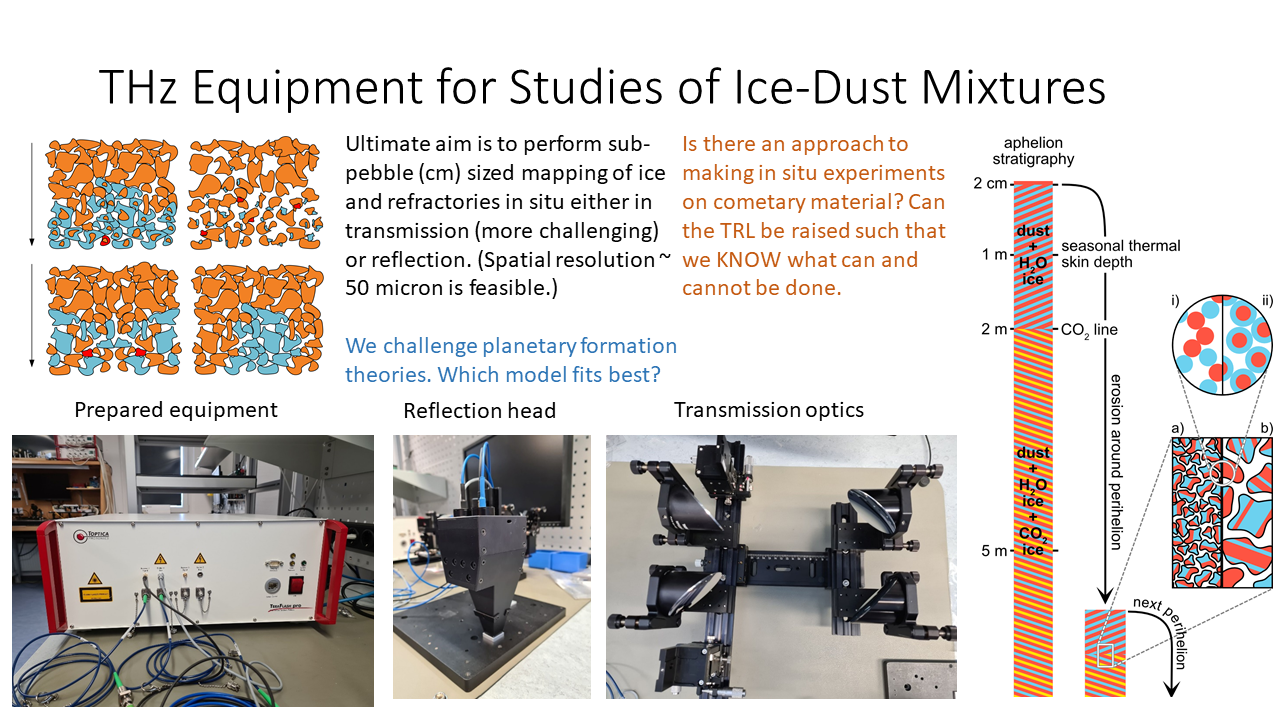The primary aim is to establish novel experimental and numerical techniques for determining how water ice and refractory materials are physically connected within a cometary nucleus at scales of a cm or less. This is motivated by the need to constrain how ices and refractory material combined in the planetesimal formation process in the early epochs of our Solar System. The long-term scientific questions that we need to answer are a) What is the physical and chemical structure of a comet nucleus at sub-cm scales? (Are there pebbles? What are the pore sizes? How are refractories and ices combined to form a structure?) b) How does that structure enable and sustain activity? c) How does that sub-cm sub-surface structure influence measurements in the coma? (Can coma measurements constrain the properties of that structure?) This motivates our aim of exploring a novel approach to investigating cometary material in situ using terahertz (THz) spectroscopy. The specific questions we need to ask here are first steps towards this goal. Namely,:- 1. Does THz-Time Domain Spectroscopy as a technique allow the study of ice-refractory structures in situ without compromising the integrity of a comet-like analogue? 2. Can we follow the evolution of the physico-chemical structure of a subliming comet analogue using this technique? Our co-funded research proposal is intended to support development of a laboratory system that can address these initial questions. As the University of Bern’s contribution, we support a PhD student (100% for 4 years) and have procured a laboratory THz spectrometer (Toptica; 70 kEuro). We also intend to provide funding for a vacuum chamber. We request from ESA, funding for a 50% construction engineer for 1 year to support the vacuum chamber facility development and 50% of a PhD student for ~2 years to support the modelling of the sublimation process. Our ultimate goal is to develop a concept for a new instrument to study cometary material in situ.

